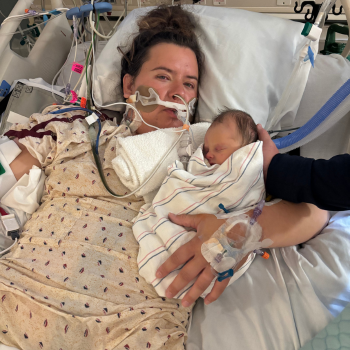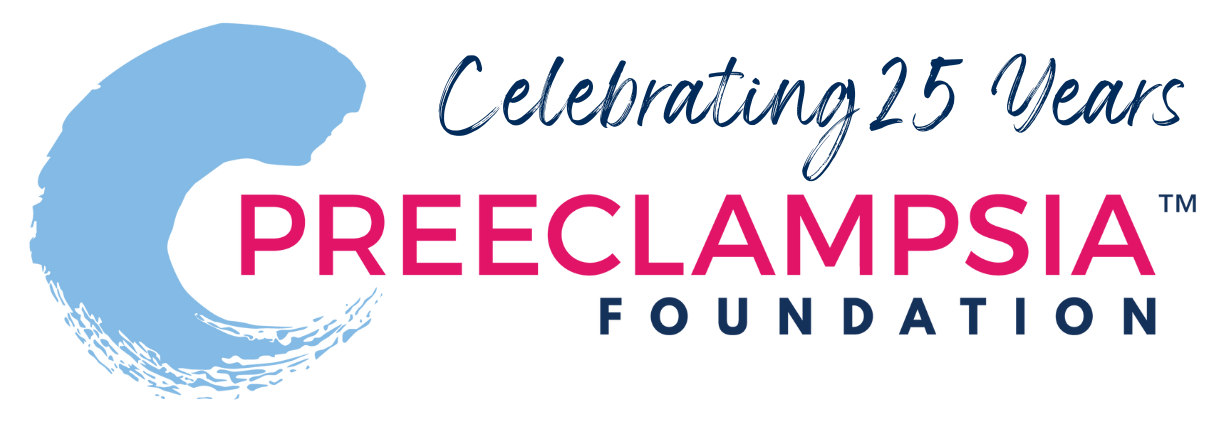1748017832.png)
I Never Knew Preeclampsia Could Occur Postpartum Until It Happened To Me
May 23, 2025 By Stephanie Ciapala
1748017832.png)
Throughout my pregnancy, I was fortunate to have great prenatal care. I kept the signs of preeclampsia on my radar, though was not concerned that it would happen to me. I was low risk, perfectly healthy, and had no signs or symptoms of preeclampsia throughout my pregnancy.
When I arrived to the hospital for elective induction, my blood pressure was mildly elevated and normalized to baseline immediately after delivery. I thought nothing of it. On postpartum day 3 and my expected day of discharge, my blood pressure began to rise. Much to my dismay, I was kept in the hospital one more night to monitor the trend.
In the middle of that night, my blood pressure spiked with systolic blood pressures in the 170s. Based on my severe range blood pressures and renal function labwork, I officially had postpartum preeclampsia with severe features. The team scrambled to re-establish IV access in the middle of the night to control my blood pressure and I received IR nifedipine in the meantime. I was ultimately escalated to a higher level of care to receive continuous infusion IV magnesium and hourly neuro assessments due to my high risk of stroke and seizure at that point. While magnesium may sound like a benign medication, I can assure you it is not. I was so dizzy that I could not focus my eyes and could barely keep my eyes open. I could not get out of bed per hospital policy, let alone sit up at the edge of the bed – which I would have been too drowsy to do so anyways. I could not safely hold my baby on my own. It was the longest, most miserable 24 hours of my life. After spending just over a week in the hospital, I was discharged home on multiple blood pressure medications. At 8 weeks postpartum, my blood pressure had officially returned to normal off all medications and my labwork had normalized.
I would be remiss not to mention the mental toll of postpartum preeclampsia. I was already recovering mentally and physically from a long induction and traumatic delivery involving an emergency C section and postpartum hemorrhage, so this obstacle of postpartum preeclampsia was the icing on the cake. I was in denial with every blood pressure reading and had no idea how or why it happened. I felt completely alone and that I must have done something wrong. As I had no obvious symptoms apart from “silent” symptoms of elevated blood pressure and lab evidence, I was in constant fear. What if my blood pressure spikes again in my sleep? What if something happens when I am home or alone with the baby? What if I have to go back to the hospital – will I be separated from my baby? My early postpartum period was full of follow-up appointments, blood pressure logs, phone calls with doctors, medication titrations, and lab work. With all of my own postpartum complications, I could not devote the amount of time and attention I had wanted to give to my baby at that phase. This was certainly not the welcome to motherhood I had envisioned and I was robbed of the experience I longed for with my baby.
While I wish I never had to experience this, I realize how lucky I am that this occurred after the delivery of my baby, as this is not the case for many women who experience preeclampsia. I am thankful I was still in the hospital, as I likely would not have known I had developed preeclampsia until it was too late if I were at home. I am grateful for the support of my husband, parents, and family who got me through and the attentive team of providers who quickly diagnosed and treated me, monitored closely, and helped me become a postpartum preeclampsia survivor.
For those who are struggling through or have endured postpartum preeclampsia, I hope my story helps you find peace knowing you are not completely alone. I hope my story brings awareness that preeclampsia is still a risk after delivery, even in healthy women with an uncomplicated pregnancy. I never knew preeclampsia could occur postpartum until it happened to me.

I was sick throughout my pregnancy, but once the third trimester came it felt different. I was violently ill and could barely keep anything d...
ReadMore- Madeline’s Survival Story October 03, 2025
- Postpartum Nightmare October 03, 2025
- Preeclampsia Diagnosis Went 0-100 In Under 2 Weeks October 03, 2025
- I Wish I Knew More About the Symptoms October 03, 2025
- Always Trust Your Gut Instincts and Advocate For Your Health September 20, 2025
- Hellp Syndrome September 20, 2025
- Hellp My Liver Ruptured September 20, 2025
- Olivia’s Story September 08, 2025
- Times Two September 08, 2025
- My Story September 08, 2025
